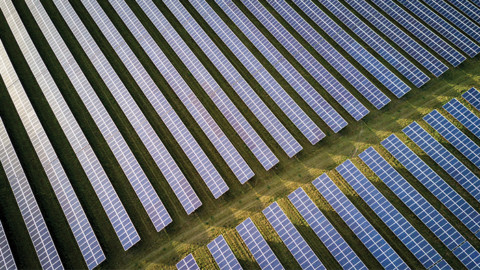The Clean Energy Finance Corporation (CEFC) has made its first equity investment in the Australian agriculture sector to target major clean energy benefits.
As part of the CEFC investment, the CSIRO will contribute expert analysis to enable clean energy learnings to be shared across the farming sector.
The CEFC has committed $100 million to the agricultural platform of Macquarie Infrastructure and Real Assets (MIRA).
MIRA will manage large-scale row cropping assets, such as wheat and other grains, and permanent crops, including avocados, targeting improved on-farm energy efficiency and reduced carbon emissions.
CEFC, CEO, Ian Learmonth, said, “This is an exciting investment which demonstrates the very broad potential of a clean energy focus to make a positive difference right across the Australian economy.
“Australian agriculture is globally recognised for its innovation and the high quality of our products. Through this investment, our goal is to see it also recognised as a leader in lowering on-farm emissions, through better technology and on-farm practices.
“We are delighted to be able to include the CSIRO in this program, as an important way to share learnings and insights right across the agriculture sector.”
The CEFC investment will contribute to sustainable on-farm asset management practices, with MIRA investing in farms across multiple climatic zones, production regions and end markets.
A technology-driven whole-of-farm approach, incorporating the full range of precision agriculture and other sustainable farm management practices, will deliver increased productivity with improved energy efficiency.
The key objective will be to achieve reduced energy intensity on a per unit of production basis, and to deliver improved financial and environmental efficiency.
MIRA Head of Agriculture, Elizabeth O’Leary, said, “We are delighted to be part of this pioneering initiative with the CEFC to pursue new methods of sustainable production in Australian agriculture.
“This is an important investment into research and development that will see us adopting various energy efficient technologies on the properties to make environmental savings, while maximising soil health and productivity.
“We have been managing a significant portfolio of farmland in Australia for more than a decade, and look forward to bringing our expertise and experience across a range of production environments to further energy efficiency and sustainability practices in the sector.”
MIRA will continue to invest in those communities in which it operates by creating employment opportunities, both on and off-farm.
As the farm portfolio grows, a number of farm management teams will be built across regional Australia with deep knowledge of local production environments.
The on-farm teams will be supported by a new business, Viridis Ag, based in Albury, NSW.
A key feature of the CEFC investment is the establishment of a specialist Energy, Emissions and Efficiency Advisory Committee – 3EAC – drawing on the skills of the CSIRO, MIRA and CEFC.
3EAC will support new on-farm standards in energy efficiency and emissions reduction.
It will also develop clean energy models targeted for broader use in the farming sector.
As a ground-breaking element of the CEFC investment, MIRA and the CEFC will work with the CSIRO to develop an emissions-reduction benchmarking system consistent with Science Based Targets (SBTs).
SBTs are a global industry program initiated after the COP21 Paris Agreement on climate change to develop sector-specific pathways to emissions reduction.
CEFC transaction lead, Rory Lonergan, said MIRA would target a significant improvement in emissions intensity (CO2-e per tonne of output).
“The cropping sector is an important part of Australian agriculture, and has the potential to lead the way in adopting new technologies and evolving farm practices to reduce overall sector emissions,” Mr Lonergan said.
“Clean energy also offers substantial economic benefits for farmers in the form of lower energy costs and greater operational efficiencies.
“By working alongside one of the largest institutional managers of Australian farm assets to embrace energy efficiency, we are aiming to create a clean energy model that can be used sector-wide, including in small and larger-scale family-based operations, which make up 95 per cent of the agriculture sector.”
















